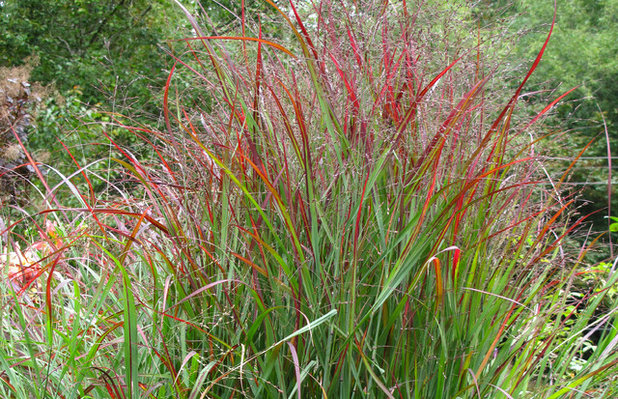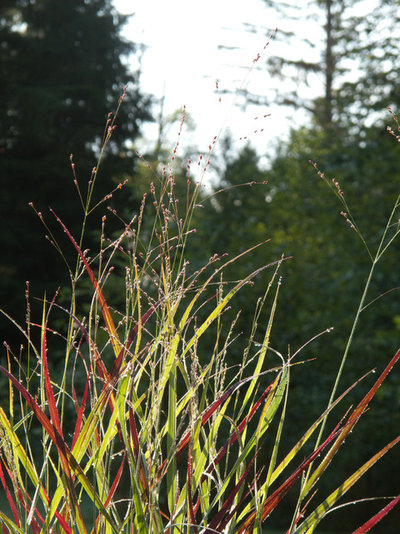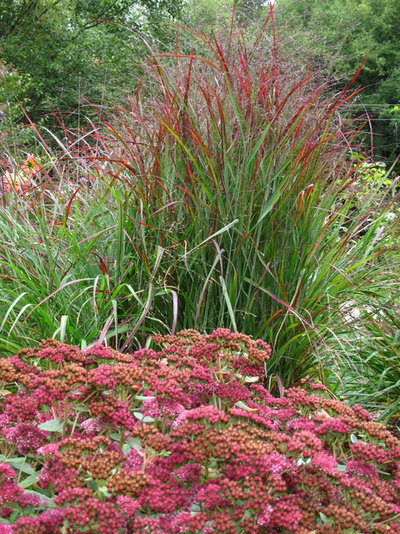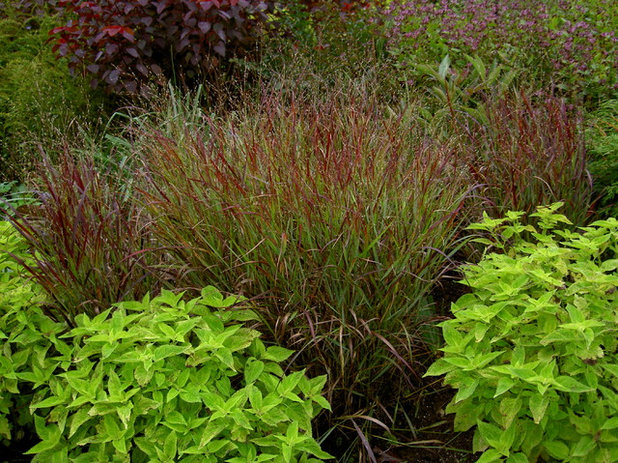September brings a change in the air — it’s almost tangible. Cooler evenings have us hunting for our favorite sweater again, heavy morning dew reveals the cobwebs spun overnight by busy spiders, and an indefinable fragrance tells us that fall has arrived.
Our gardens also begin to mellow as the sun arcs lower in the sky, casting a warmer light and softer shadows. While many flowers are putting on their last hurrah, grasses are just coming into their peak. One of my favorites is the switchgrass ‘Shenandoah’ (
Panicum virgatum ‘Shenandoah’).

Le jardinet
Botanical name: Panicum virgatum 'Shenandoah'
Common name: 'Shenandoah' switchgrass
USDA zones: 4 to 9
(find your zone)
Water requirement: Low
Light requirement: Full sun
Mature size: 4 feet tall and 2 feet wide
Benefits and tolerances: Drought tolerant and deer resistant
Seasonal interest: Fall color
When to plant: When the soil is warm
(spring through fall)

Le jardinet
Distinguishing traits. Switchgrass is a warm-season grass, which means that it doesn't grow until the soil has really warmed up. But apart from wanting warmth, this is a seriously
tough grass that tolerates poor, dry soils and is deer resistant. My local rabbits have also ignored it so far, but that may be because they are too busy eating my Heuchera.
By June the dusky green blades are tipped with burgundy, the color intensifying as fall approaches. Be sure to plant it where you can enjoy the light shining through the foliage, a truly magical effect. Airy deep red flowers, or panicles, dance like tiny jewels in the slightest breeze.
'Shenandoah' forms a tidy upright clump, playing nicely with its neighbors.

Le jardinet
How to use it. So many possibilities!
- Use as a vertical accent in a mixed border in the same way that you might use a columnar tree or shrub.
- Build a fall vignette around 'Shenandoah' using sweeps of other fall stars such as coneflowers (Echinacea spp) or black-eyed Susans (Rudbeckia spp).
- Switchgrass is a perfect candidate for xeriscaping. I have watered my 2-year-old plants only twice since June, and they still look fabulous! Next year they may not need even that.
- A grid of these rising out of a gravel bed would bring a contemporary flair.
- Create eye-catching combinations by repeating the deep red notes in a companion plant. Stonecrop (Sedum 'Autumn Joy', shown here) makes a perfect partner; its wide flat flower heads make an interesting contrast to the strong vertical lines of the grass. Mounding purple barberries — 'Concorde' (Berberis thunbergii 'Concorde'), for example — would also work well.
- A mass planting would be stunning and would hark back to its native prairie habitat.

Lazy S'S Farm Nursery
Planting notes:- Plant any time that the soil is warm — usually from June through September.
- Many pot-grown grasses become root bound, so loosen up the root ball with your fingers before planting in average, well-drained soil and full sun.
- No fertilizer or special soil amendments are needed.
- Water regularly during its first season.





